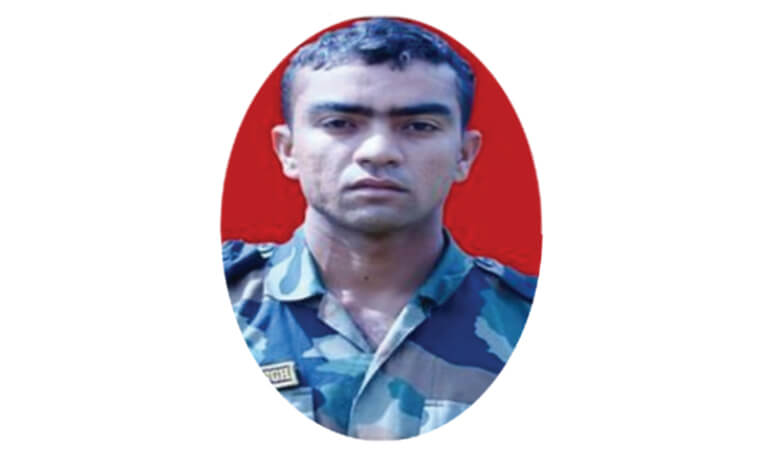Hero of the Gurez encounter
Navneet Singh was born on 8 June 1985 in Gurdaspur, Punjab. He was a third-generation soldier to serve in the Indian Army. His grandfather was a junior commissioned officer while his father Joginder Singh served as Subedar-major in the Bengal Sappers for 30 years and retired as Honorary Captain. He completed his schooling from Army Public School, Tibri and completed his graduation in B.Sc. in Hotel Management in 2006 from Institute of Hotel Management (IHM) Gurdaspur and post-graduation in the Army Institute of Management, Kolkata in 2009, where he received his MBA degree.
Singh shunned a corporate career and instead joined the Officers Training Academy as a gentleman cadet. He was commissioned into the Army Ordnance Corps, on 19 March 2011. For the duration of these two years, the officer, for all practical purposes, belongs to the said infantry battalion. Lieutenant Singh was attached to the 15 Maratha Light Infantry in J&K in his first posting as Commissioned Officer. He was Ghatak Platoon Commander of 15 Maratha Light Infantry deployed in Gurez sector in the high altitude area near the Line of Control (LOC).
Gurez is a valley located in Himalayas, about 123 kilometres from Srinagar. The valley lies near the Line of Control and has been an area of insurgency. High mountains and closeness to the LoC enable Pakistani terrorists to infiltrate.
At about 0030 hours on 20 August 2011, the Surveillance teams of 15 Maratha Light Infantry spotted some terrorists. For Lt. Navdeep Singh Bains this was barely five months after his commissioning into the army. It was the biggest-ever infiltration attempt in J&K that year. Twelve terrorists dressed in black commando combat dresses armed with AK-47 rifles, Chinese-made 7.62 mm pistols and communication devices attempted to infiltrate the LoC using inflatable rubber boats on Kishnaganga river, considered the de facto LoC between India and Pakistan. Singh was made in charge of an ambush party. When the terrorists were in the range, exchange of fire ensued. Leading from the front, the lieutenant eliminated three terrorists.
On seeing another terrorist approaching their position, with utter disregard to his personal safety, Singh changed his firing position. While doing so, he got hit by a bullet on his head. He still managed to eliminate the fourth terrorist. He pulled an injured fellow soldier to safety and kept firing till he became unconscious due to excessive blood loss. The encounter lasted about eight minutes in which six terrorists fell into the river and were swept away, while the bodies of the remaining six were recovered. Singh was airlifted to the unit hospital. But he was already dead by then.
Lieutenant Navdeep Singh who was only 26-year-old displayed his indomitable spirit, determination, and exceptional bravery while putting down the terrorists and making the supreme sacrifice for the nation.
His body was brought to Gurdaspur the next day. Mourners included people of his hometown, personnel from civil and army officers and soldiers from his regiment who gave him a guard of honour and the final salute. A state cabinet minister representing the chief minister laid a wreath on his body. He was cremated with full state and army honours amid crowd showering flowers and chanting “Navdeep Singh amar rahe”. The roads were so crowded with mourners, the cremation was delayed by two hours. The 16, J&K Light Infantry regiment paid a gun salute in his honour.
Navdeep`s death has not weakened his father Joginder Singh who said, “Though he won the battle with terrorists, he offered his life for the nation. He is a great martyr. I would feel proud to send my younger son Sandeep Singh too, to serve in Indian Army.”
Lt. Navdeep Singh was awarded the Ashoka Chakra posthumously which was received by his father on the 63rd Republic Day.
Brigadier Suresh Chandra Sharma (retd.)

